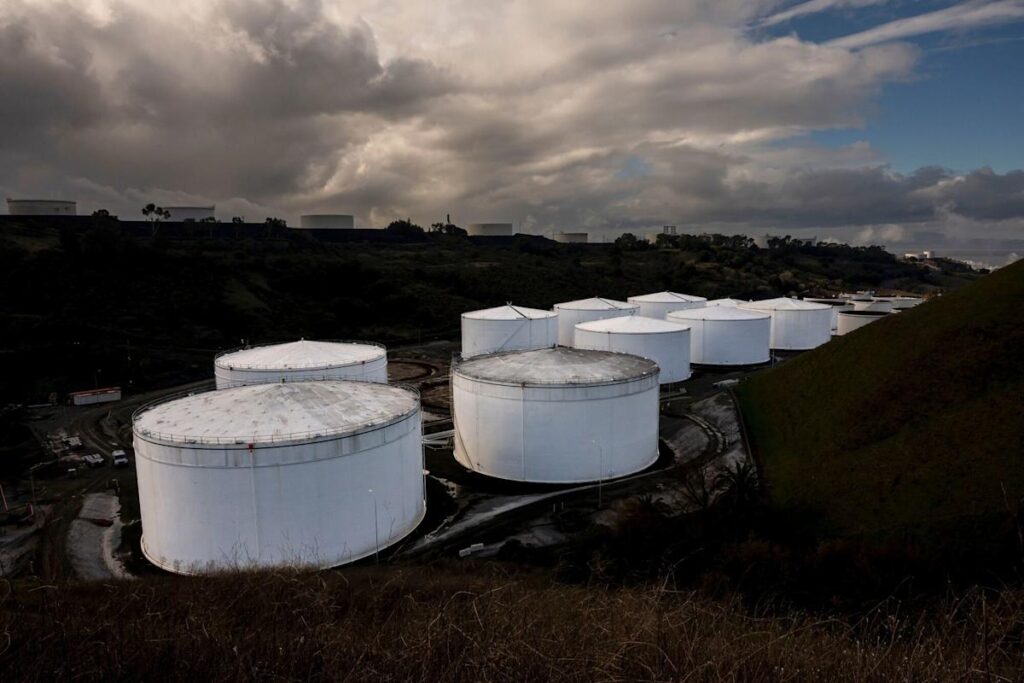(Bloomberg) — Oil in New York steadied after sinking back into the $60s-a-barrel range as a souring economic outlook threatened prospects for energy demand and spurred investors to shun risk assets including crude.
Most Read from Bloomberg
West Texas Intermediate held near $69 a barrel after losing more than 2% on Tuesday for its lowest close since mid-December, with Brent around $73. A poor reading of US consumer confidence, which fell the most since 2021, fanned concerns driven by President Donald Trump’s tariff actions.
Crude has lost almost 5% this month as Trump’s aggressive moves on trade stoked investor anxiety at a time when oil traders were already concerned about lackluster consumption in China. Supply issues have also been at the fore, including the possibility of a restart of significant pipeline flows from Iraq’s semi-autonomous Kurdistan region, with the US pushing for a resumption.
The combined headwinds for crude have eclipsed the lift from fresh sanctions against Iranian flows, as well as expectations that OPEC+ will probably defer a plan to raise output in stages from April. If so, that would be the fourth time the cartel had pushed back a move to restore production.
“Tariffs and counter-tariffs have the potential to weigh on the oil-intensive part of the economy, which creates uncertainty over demand,” Morgan Stanley analysts including Martijn Rats said in a note. “We expect OPEC to extend its current quota beyond April, likely keeping production broadly stable.”
Elsewhere, there was a mixed report from the industry-funded American Petroleum Institute on US commercial inventories. While nationwide holdings decreased by 600,000 barrels last week, levels at the key storage hub at Cushing, Oklahoma, were seen rising by a substantial 1.2 million barrels.
To get Bloomberg’s Energy Daily newsletter in your inbox, click here.
Most Read from Bloomberg Businessweek
©2025 Bloomberg L.P.


